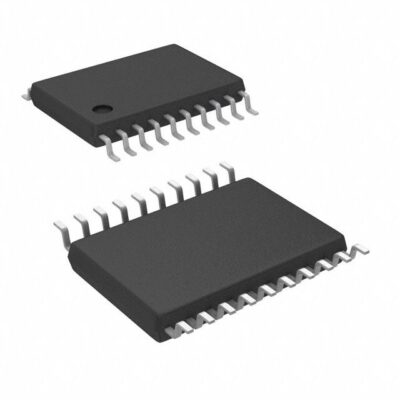C8051F530A-IT
Part Number: C8051F530A-IT
Manufacturer: Silicon Labs
Description: IC MCU 8BIT 64KB FLASH 48TQFP
Shipped from: Shenzhen/HK Warehouse
Stock Available: Check with us
ICRFQ.com - Electronic Components Distributor in China Since 2003

Part Number: C8051F530A-IT
Manufacturer: Silicon Labs
Description: IC MCU 8BIT 64KB FLASH 48TQFP
Shipped from: Shenzhen/HK Warehouse
Stock Available: Check with us
| Category | Integrated Circuits (ICs) |
|---|---|
| Family | Embedded – Microcontrollers |
| Manufacturer | Silicon Labs |
| Series | C8051F53x |
| Packaging | Tube |
| Part Status | Active |
| Core Processor | 8051 |
| Core Size | 8-Bit |
| Speed | 25MHz |
| Connectivity | LIN, SPI, UART/USART |
| Peripherals | Brown-out Detect/Reset, POR, PWM, Temp Sensor, WDT |
| Number of I/O | 16 |
| Program Memory Size | 8KB (8K x 8) |
| Program Memory Type | FLASH |
| EEPROM Size | – |
| RAM Size | 256 x 8 |
| Voltage – Supply (Vcc/Vdd) | 1.8 V ~ 5.25 V |
| Data Converters | A/D 16x12b |
| Oscillator Type | Internal |
| Operating Temperature | -40°C ~ 125°C (TA) |
| Package / Case | 20-TSSOP (0.173″, 4.40mm Width) |
| Supplier Device Package | 20-TSSOP |
The C8051F530A-IT microcontroller from Silicon Laboratories is based on the time-tested 8051 architecture, which is a cornerstone of embedded systems. This microcontroller combines both the series’ pedigree and the continued appeal of the 8051 architecture, which is noted for its dependability and versatility in a wide range of applications. Let’s look at its features and capabilities to see how powerful it is for embedded projects.
The C8051F530A-IT microcontroller has a plethora of capabilities that make it a strong contender for embedded system development. Here are some more details about it:
These capabilities enable developers to design responsive and capable embedded systems by using the strengths of the 8051 architecture and the microcontroller’s performance characteristics.
The C8051F530A-IT microcontroller’s clock system is a vital component that orchestrates the timing and synchronization of its operations. Let’s look at how the microcontroller generates and distributes the clock:
The clock speed directly impacts the microcontroller’s performance and capabilities. Here’s how it affects the overall system:
It’s crucial to note that while faster clock speeds improve performance, they can have drawbacks including increased power consumption and perhaps more difficult design issues.
To summarize, the clock system is a critical component of microcontroller operation, determining its performance, efficiency, and ability to handle real-time tasks. When designing systems, clock speed must be carefully considered in order to strike the correct balance between performance and power consumption.
The C8051F530A-IT microcontroller has a number of I/O pins that can be set to be either input or output. These pins act as a link between the microcontroller and the outside world. Developers can program the pins for a variety of functions including as digital I/O, analog input, and communication protocols such as SPI or I2C.
In response to an event, interrupts cause the microcontroller to pause its present operation and quickly run a predetermined piece of code. Interrupts are used to deal with time-sensitive events like sensor inputs or communication signals. Interrupts can be prioritized by the microcontroller based on their importance.
Asynchronous serial communication is enabled via the UART module, which allows the microcontroller to send and receive data serially. It is commonly used to communicate between microcontrollers and other devices such as sensors, displays, or computers. UART communication employs two lines: one for transmission (TX) and one for reception (RX).
The C8051F530A-IT microcontroller’s versatility opens doors to a wide array of applications across various industries. Its robust features and capabilities make it well-suited for:
The C8051F530A-IT microcontroller demonstrates the 8051 architecture’s continued importance in the embedded industry. Its 8-bit CPU, fast clock speed, memory, and diverse peripherals enable developers to realize their creative ideas.
The journey is now yours to continue. For more information and to order this product, contact ICRFQ, a major electrical component distributor in China. Dive into the world of embedded systems, explore the resources provided by Silicon Laboratories, and begin experimenting with the C8051F530A-IT microcontroller. This microcontroller can be your dependable partner on the road to invention, whether you’re developing the next breakthrough technology or simply honing your skills.
WhatsApp us